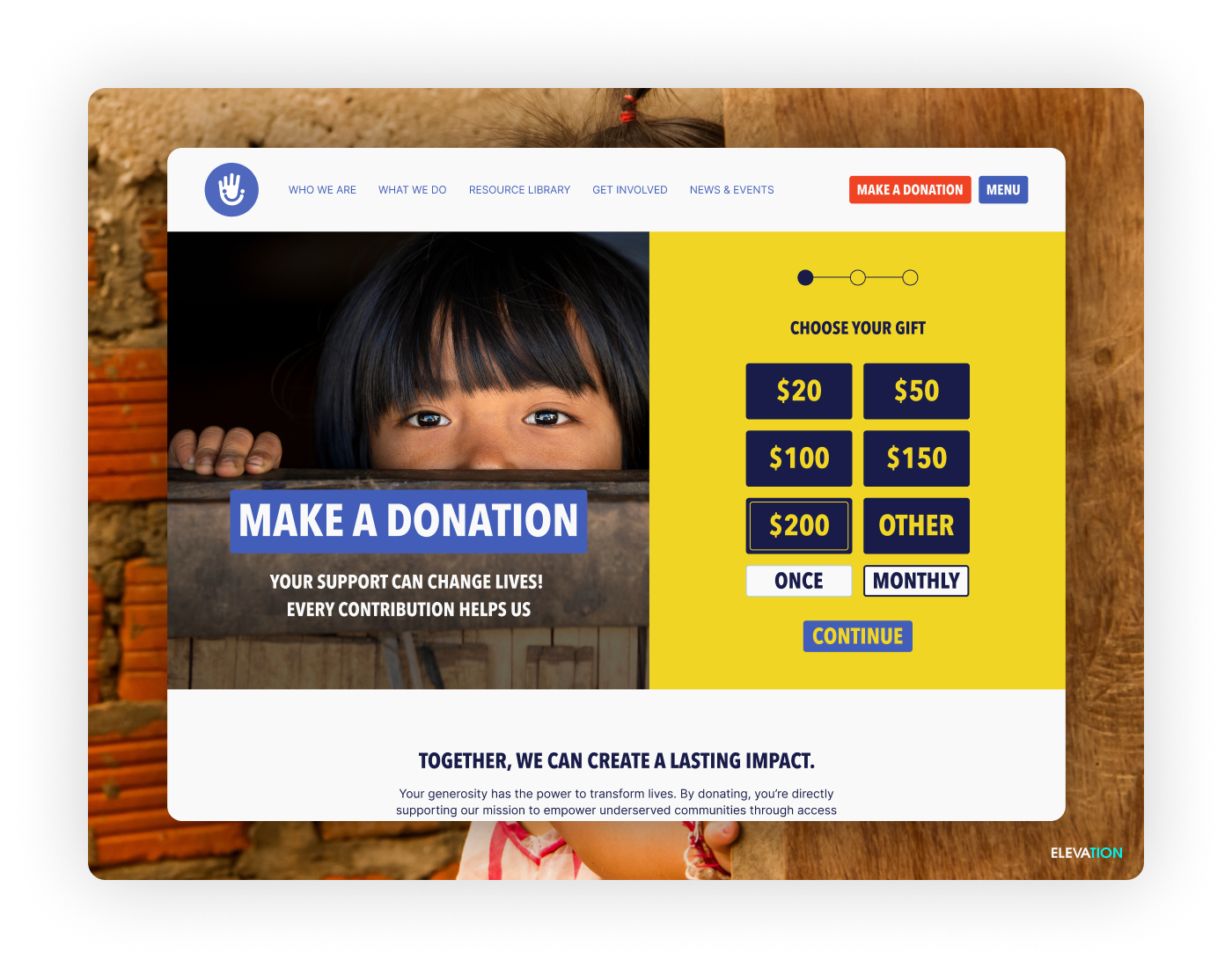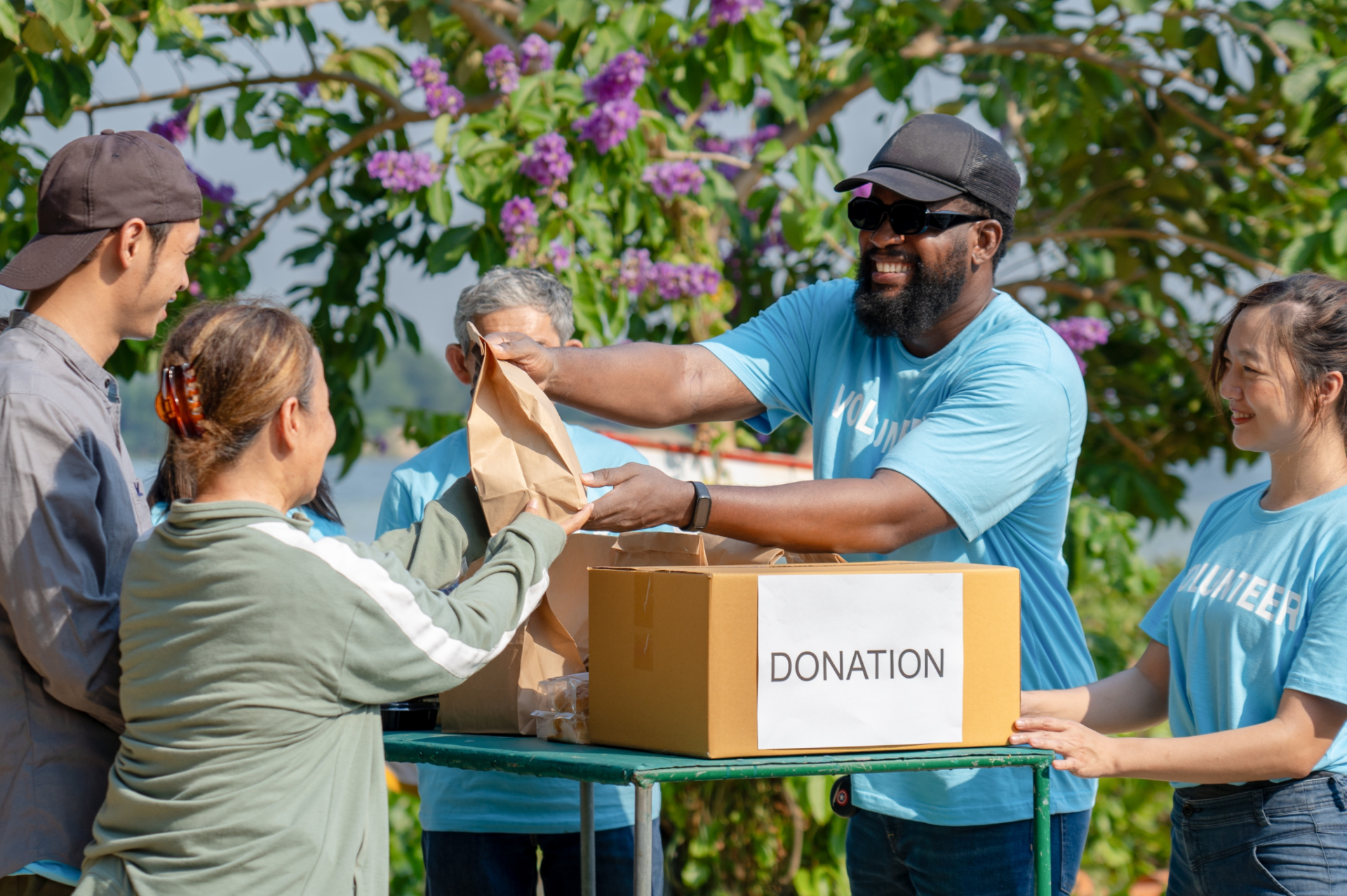On its surface, earning donations online is incredibly simple. Potential donors discover your website, learn about your cause, and decide to contribute. However, considering the competition of today’s digital marketing landscape, paired with new trends in supporter giving habits, it’s not enough to just create an online giving page and hope for the best.
Today’s donors want to make a connection with a cause they care about and sometimes even join its community. To accomplish these goals, donors will usually begin by looking to your nonprofit’s online resources.
To meet these donors’ expectations and set your nonprofit up to meaningfully engage with supporters online, this article will answer five essential questions for creating an online community:
-
How should your donation page look?
-
Why should you have an online presence?
-
How should you use social media?
-
What is peer-to-peer fundraising?
-
What are additional online strategies?
While there are popular best practices that will apply to most organizations, many of the answers to these questions will depend on your nonprofit and your specific community. Use these questions as a jumping-off point to create an online engagement experience that meets your supporters’ expectations. Let’s get started.
1. How should your donation page look?
Essentially, all of your community-building and engagement efforts will have the same goal: encouraging supporters to donate. This means before fleshing out the rest of your community engagement strategy, you should ensure your donation page can facilitate the best giving experience possible.
Your donation tools should help you build a custom page where you can create a positive giving experience by:
- Asking only for the information you need. By limiting your fields to only what is absolutely necessary, you’ll provide an easier experience for your donors and allow them to complete the form in a timely manner.
- Matching your form to your nonprofit’s branding. If your form is customized to match the rest of your website’s branding, your donors will feel confident that their contribution is going to your cause and not to a questionable third-party website.
- Describing your impact. Make it clear who and what donations will benefit and how your nonprofit will make an impact with those contributions.
There are several ways that online donation pages can turn off supporters, which can result in potential supporters ending their engagement at a crucial moment in their relationship with your nonprofit. Avoid this by ensuring the process is simple, logical, and easy.
2. Why should you have an online presence?
According to Double the Donation’s fundraising report, online giving has increased by 23% over the past year, up from a previous growth rate of 15%. As online giving continues to grow, participating in digital marketing and online conversations is no longer optional for nonprofits.
With the rise of various websites ranking charities’ impacts and budget breakdowns, it’s clear that today’s donors are invested in doing their research and giving to a nonprofit they know will make good use of their hard-earned money. Your nonprofit can make this process easier for donors by setting up a professional website that clearly explains your nonprofit’s mission and shares key details about your ongoing initiatives.
3. How should you use social media?
For most nonprofits, only a handful of their most dedicated supporters will regularly go to their website for each update. Instead, most supporters prefer to engage with content and messages that are delivered to the platforms they already frequent, such as their social media feeds.
Some nonprofits see social media as an obstacle to getting supporters to engage with their website, but these platforms can reinforce and build on each other to attract new supporters. Here are a few tips you can use to make the most of this evolving channel:
- Determine the platforms your community uses. Focus your efforts on the handful of platforms you know your donors already use. Facebook is a powerful tool, but you should also consider Instagram, YouTube, and even TikTok to attract a wider audience.
- Have a strong online presence. Whether that means creating a Facebook page or Instagram account, be sure to regularly share meaningful content. It’s not enough to create a Facebook event for a campaign and share it just once. Create a posting schedule to ensure you’re regularly appearing in supporters’ feeds. Also, comment on supporters’ posts and share any posts they make about your organization to make them feel valued and appreciated as individuals.
- Share different types of content. Videos and images are more effective at grabbing attention from scrolling users than text alone. Break up your posts with strong imagery and videos that demonstrate your nonprofit’s mission or highlight your ongoing campaign.
- Update and thank your supporters. As part of regularly sharing content, update your supporters on your ongoing campaigns and programs you’re running. Thank them individually online to show recognition and encourage others to offer their support, as well.
- Run contests. How about a little friendly competition? Draw attention to your nonprofit with a photo contest, essay contest, or video contest where individuals can explain what your cause means to them. People want their content to be seen, so encourage them to post entries on your social media pages and feature the winners there.
Make an effort to keep your accounts active. A social media account that hasn’t been updated for over a year may be taken as a warning sign that the nonprofit behind it is no longer active, which may discourage some potential supporters from giving.
4. What is peer-to-peer fundraising?
Peer-to-peer fundraisers make the most of the community aspect of your online network. By calling on supporters to raise funds on your behalf, your nonprofit can turn donating into a social activity. It works like this:
- The nonprofit determines its campaign goals.
- The nonprofit calls on supporters to set up their own individual campaign pages.
- The nonprofit coaches and provides resources for the volunteer fundraisers.
- The volunteer fundraisers share their campaign pages on social media.
- The nonprofit tracks the progress of the overall campaign.
Just like with any other fundraising method, peer-to-peer campaigns have unique best practices. For instance, you should encourage your volunteer fundraisers to customize their pages to share their stories.
Your community is more likely to engage online with people they already know, and hearing about a personal connection a friend or family member has to a cause can be an extremely convincing reason to donate.
5. What are some additional online strategies?
From evoking a sense of urgency to running product campaigns, there are a wide range of other ways to engage with your community online.
Try out these tips to build on your fundraising strategy:
- Urgency. This is the ultimate call to action. Show your community how much time they have to act, which will encourage them to make a decision and donate. For example, running a 24-hour campaign (like #GivingTuesday) alerts individuals to your cause and incites them to act quicker than they might normally.
- Meaningful content. What makes your content meaningful? Focus on your nonprofit’s story by sharing anecdotes about who your cause is benefiting and the overall impact your nonprofit has made.
- Product campaigns. Promote your nonprofit’s image by running a product campaign, such as a t-shirt drive. Find a provider that allows you to design the products and offer them online.
- Crowdfunding. This fundraising method involves large amounts of people donating small sums of money online to support a project or cause. If you have a major project that requires a lot of start-up funds, a crowdfunding campaign can help spread awareness and gain revenue quickly.
- Emails. Send out monthly or weekly newsletters, as well as information about donation campaigns. Provide accessible information via email and proactively reach out to current and potential supporters alike.
As several of these engagement strategies will require their own webpage, look into flexible online fundraising tools. For example, Donately’s guide to fundraising websites walks through a variety of options nonprofits can use, from matching gift databases and online merchandise stores to crowdfunding pages and donation forms.
Engaging with your online community can be a challenge, but it doesn’t have to be. If you take advantage of the right resources, focus on your social media presence, and build on the strategy you already have in place, you’ll be ready to further your engagement and build long-lasting relationships.
Try out these strategies and see for yourself!



